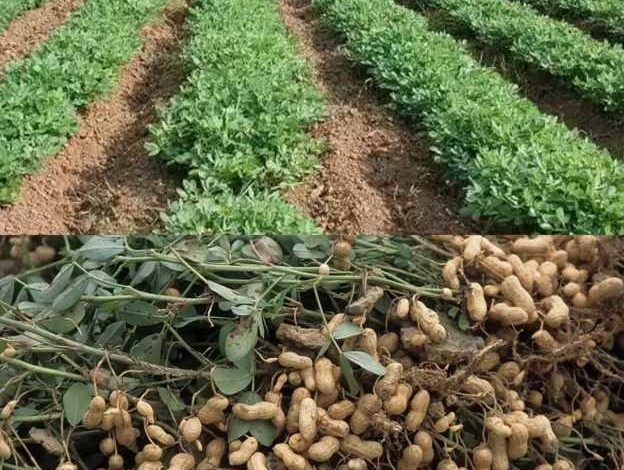Kenya: Jane Mukami – Why I Won’t Stop Growing Groundnuts

Kithino is a sleepy shopping centre in Tharaka Nithi County, with little economic activities save for a few shops and motorbike taxis.
However, the dusty trading centre is a must-stop place for farmers in the area as it hosts an agrovet, grocery and a cereals’ shop where they either stop to sell or buy products.
Seeds of Gold team meets farmer Jane Mukami at the outpost before heading to her farm some 2km away.
The farmer plants groundnuts after ditching maize due to poor yields.
“Planting maize became a loss-making venture. Groundnuts now offer us fresh hope,” says Mukami, who grows a new variety known as Batian Nuts developed by Egerton University.
She embraced groundnuts last year, planting the crop on an acre-and-a-half.
“After land preparations, I purchased seeds at Sh8,000 and grew them at a spacing of 45cm between the rows and 15cm between plants,” she says.
However, things did not go as planned as she harvested about 260kg of unshelled groundnuts in March that she sold earning some Sh13,000.
Inadequate rainfall
“I had high hopes of harvesting about two tonnes but due to rainfall shortage in February, I did not reap maximum yield. I have not given up though since there is a huge potential in groundnuts with a kilo currently going at Sh300,” says the mother of two, who is also the assistant chief of Kithino sub-location in Tharaka Nithi.
To get maximum returns, Mukami advises that one must do land preparation about two weeks before planting.
“Before the groundnuts germinate, spray herbicides to kill weeds and when the crop starts flowering, do mounding to give the nuts more soil nutrient,” she explains.
Harvesting is critical, she says, thus one must place the produce on the ground as soils contain pathogens that could attack the pods and penetrate the nuts. “You should dry the nuts on a canvas.”
Groundnuts are prone to pests such as termites and millipedes and diseases like rust, late leaf spot, root rot, stem rot, wilts and blight. The pests are curbed by the use of pesticides.
The farmer plans to plant a new crop during the short rains season from September or October. “I plan to increase acreage as there is a ready market,” says Mukami.
Quality seeds
Harun Mbogoh, an agronomist, says successful groundnut farming is determined by the best agronomical practices that start with buying quality seeds, land preparations, harvesting and post-harvesting handling.
“Spacing is critical. Some farmers broadcast seeds but this affects germination, which translates to poor yield.”
“The planting space should be 45cm between the rows and 15cm between the plants to give one 60,000 plants per acre.”
Mbogoh advises farmers to be keen on the first weeding by doing proper mounding of the crop.
“Groundnuts do not produce from the roots. They produce from the branches when flowers produce pegs which penetrate the ground and form pods.”
Harvesting the crop at the right time when it has matured and drying on canvas for five days helps to avoid aflatoxin.
Prof Paul Kimurto from Department of Crops, Egerton University, says many farmers are still growing traditional groundnut varieties such as Kitharaka, which produces about three bags per acre and takes three months to be ready for harvesting.
The new variety, according to him, has a potential of between 30 to 40 bags per acre and matures in two-and-half months.







